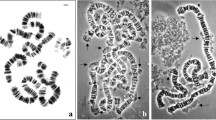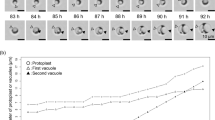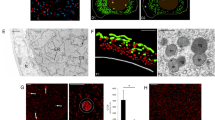Abstract
A USEFUL feature of the dikaryon of Coprinus lagopus sensu Buller is the ability to recover monokaryons with nuclei of one or other of the component types. It is thus possible to confirm whether the genotype of these nuclei has remained unchanged in the dikaryon during vegetative growth since the two parental monokaryons fused. It also makes possible the investigation of one nuclear type in cytoplasm derived in part from another monokaryon.
This is a preview of subscription content, access via your institution
Access options
Subscribe to this journal
Receive 51 print issues and online access
$199.00 per year
only $3.90 per issue
Buy this article
- Purchase on Springer Link
- Instant access to full article PDF
Prices may be subject to local taxes which are calculated during checkout
Similar content being viewed by others
References
Lewis, D., Genet. Res., 2, 141 (1961).
Buller, A. H. R., Researches on Fungi, 3, 317 (Longmans, Green and Co., 1924).
Author information
Authors and Affiliations
Rights and permissions
About this article
Cite this article
COWAN, J. Recovery of Monokaryons from Veil Cells of Fruit Bodies of Coprinus lagopus sensu Buller. Nature 204, 1113–1114 (1964). https://doi.org/10.1038/2041113a0
Published:
Issue Date:
DOI: https://doi.org/10.1038/2041113a0
This article is cited by
-
An ameiotic mutant of Coprinus cinereus halted prior to pre-meiotic S-phase
Current Genetics (1982)
Comments
By submitting a comment you agree to abide by our Terms and Community Guidelines. If you find something abusive or that does not comply with our terms or guidelines please flag it as inappropriate.



